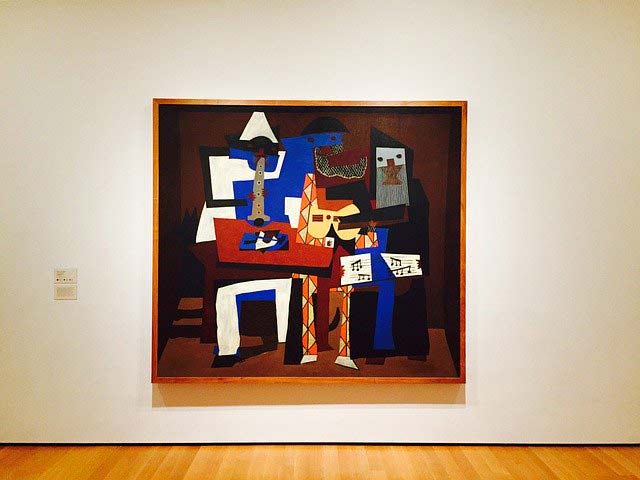Dexway English Magazine: B2 – Edition 3
Change4life
The Change4Life Campaign was created in the United Kingdom to give people simple steps towards healthy eating and being active.
It offers practical advice for making small but important changes. It is aimed at all those in Britain and Northern Ireland who feel their lifestyles could be healthier. It may not tell you how to train for a marathon, but it will tell you how to get more activity into your life, so you can have better health. It is organized into the following sections.
Eat Well, which includes easy, tasty recipes to feed 4 adults for around £5 along with shopping tips to make your weekly shopping healthier.
Advice on checking food labels so as to help you make healthier choices and information about calories to aid you in choosing more balanced meals. There’s also an idea section for tasty suggestions for your children´s lunches along with a glossary of cooking terms to avoid confusion in the kitchen.
Move More, details fun suggestions to make sure the kids stay active during school holidays and also ideas and games to entertain children at the swimming pool. This section also encourages walking and dancing.
Choose Less Booze, this section includes downloadable applications to control how much alcohol you drink and how much money you are spending on it along with fun and easy alternatives to avoid the bottle.
Find Local Activities, is a great part of the website to help you discover what you can do in your area by entering your postal code and choosing the activities that interest you more.
The slogan of the campaign: Eat Well, Move More, Live Longer. Over a million people have made a Change4Life with more joining every day. Would you like help to become healthier?
The change4life campaign started as a way to change parents behaviour in relation to what their children eat and the level of activity that their children get.
Long term change is harder then a short term change, however the results suggest that with the help and support of the change4life programme changes to childrens lives are being made.

Online sales and Markets
NEW MARKETS
With the recent advances in internet capabilities, buying items online has become much easier. Over the years, people have started using credit card numbers to purchase items in an online marketplace, but today people can buy things from their own mobile phones and tablets.
Many online markets, such as Amazon, work to combine many different offers in one place so the customer has a greater variety of prices and markets to choose from. Payment methods have become easier as well, as many places such as PayPal allow many websites to use their software for secure money transactions. This has made buying things much easier in two ways. First, the payment is much easier than it was many years ago: now most websites use an established program or only need one card number in order to make a secure transaction. Second, the offers from different markets have made shopping much easier, since the customer does not need to visit many different stores to compare prices. All of the stores and their prices are listed under one easy-to-read website and this cuts down shopping time greatly.
Not all advances in online markets are good though: sometimes items become too easy to buy. In many online games, customers spend large amounts of money to buy digital items in a game without realizing how much they spend. Often, the digital items are worthless outside of the game, and do little to contribute to the overall enjoyment of the game.
Many electronic devices are set up for easy purchases, and sometimes children will buy items without the consent of their parents. These “bad habits” of the digital marketplace are always changing, but people work to eliminate them and create barriers to remind customers of what they are buying.
Gimmick
GIMMICKY
Gimmick or gimmicky are two words that often appear together, in many ways we can’t have one without the other. We all know what a gimmick is, that sticker or plastic figure hidden inside the shell of the chocolate egg, as children we would make a bee-line to that chocolate just to have the chance to see what was inside, or when we used to collect football stickers and our motivation was slipping or our pockets were empty we could always count on that stick of chewing gum to push us a bit harder.
But we would be better to describe these cheap plastic toys as gimmicky rather than gimmicks, having a red toothbrush whose bristles change colour this is a gimmick. In short, a gimmick is something that makes the product different, that makes it stand out, something that shouts BUY ME!
Does having a red tooth brush or strawberry flavoured toothpaste make my mouth cleaner, no of course not but at least I know which tooth brush is mine! however it is often the case that gimmicks are gimmicky, cheap, plastic made items that last 2 seconds.
That old phrase that my grandfather loved so much comes to mind “You don’t get something for nothing these days son!” He would tell me “I can remember when the pocket knife manufacturer, Swiss army sold their knifes with it’s own sharpening block, that son is getting something for nothing.” A few years ago I bought a new blanket for my bed, what did I get? A torch, okay they are related and the torch was useful. I needed the blanket so I suppose we could call the torch an added bonus which is different than a gimmick.
At the end of the day the gimmick is there to make us change our minds, to help us buy that product that has the cheap gimmicky piece of plastic which breaks with a collective scream of “It broke!” followed by tears of regret.
DIY carnage
DO OR MAKE…
41% (Forty one percent) of people in a recent survey carried out by the DIY giant Homebase say that they do not have the confidence or knowledge to undertake smaller DIY jobs at home, the survey says that these jobs can be left for up to 6 months before we finally build up enough confidence to do them.
These jobs include things like blown light bulbs, squeaky doors and broken tiles. The survey results suggest that lack of time, a change in finances and lack of skills were to blame.
For me, I look at the list of jobs that I have to do at home; cut the hedges, cleaning the garden, hanging the picture frames, oiling the hinges on the doors, re-grouting the bathroom, the list is end-less and my excuse is I just don’t have the time or the jobs take longer then I think and then I have to leave them for a week or two weeks, this a vicious circle.
The lack of skill or confidence is a huge hurdle to the home DIYer, I want to put a new tap outside and maybe some electrical sockets but I don’t have the skills for this. Water, electricity and I don’t mix anyway, so I need to get profession help, to install the tap and sockets, but professional help does cost more and that is one advantage of doing-it-yourself, you save money.
Here is another reason to think twice before getting your screw-driver out, personnel injury. Fact: DIY is dangerous. On average in the UK in 2002, 600 (six hundred) people a day were injured during DIY sessions while working at home.
Superstitious minds
Many superstitions have formed from very old beliefs. The word superstition is used primarily pejoratively (negatively) to refer to religious practices like voodoo. Not walking under a ladder comes from a Christian belief in the Holy trinity. A ladder when opened makes a triangle so walking under this “breaks” the trinity which was blasphemous. And what about black cats? Well humans have kept cats as companions for thousands of years but it most likely comes from belief in witches which they are said to be able to change form into cats. In England they are a symbol of good luck.
Do you have any superstitions or beliefs? Is there validity to superstitions?
Arts and culture
PABLO PICASSO
Art is a way for people with common interests to come together and share an experience. It is a form of expression like no other. Art throughout history has changed the way people think and live. It can take form in paintings, sculptures, photography, architecture and may other visual arts. But it is not just limited to that; music, theatre, film, dance and literature can also be an art form all to itself.
There are few painters in the world who have changed the modern art world more than Pablo Picasso. His contributions to the history of art have has a great impact from his invention of the then new style of painting called cubism and his amazing art that spoke more than words ever could. He was born in Malaga Spain in 1881 and was heavily encouraged by his parents to pursue being an artist. He was a very independent and free thinker, preferring to paint what he wanted instead of the assigned projects given to him by his teachers at the Royal Academy in Madrid. He developed a very unique style and sent powerful messages about politics, society, love and peace. “I paint objects as I think them, not as I see them,” said Picasso
Art has also changed our culture. Many artists create art based on how they are feeling or how they think society is feeling about issues that are happening in the world. A piece of art can be a reflection of a country´s culture and beliefs such as in African Art who make sculptures and masks for religious and other ceremonies. No matter what the reason a piece of art was created, it will always be used in extremely powerful ways to evoke emotions from the viewer, whether it is to make us happy, sad, angry, disturbed, inspired, shocked or maybe just entertained and to enjoy a beautiful piece of art.
What kind of art do you enjoy?

